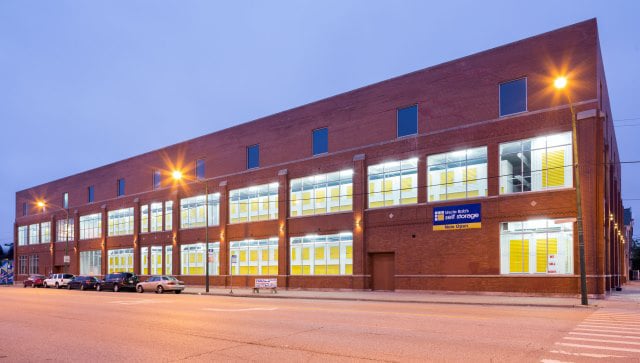
CHICAGO—The nation's largest self-storage REITs did impressive business in 2016, recording significant increases in revenues and net operating incomes, according to a new report from MJ Partners, a Chicago-based self-storage firm. But after several years of stupendous growth, there was a noticeable change last year.
“The growth in revenue and operating income was still quite robust, but it did slow down a bit,” Marc A. Boorstein, principal, MJ Partners, tells GlobeSt.com. The self-storage REITs generated same-store revenue growth for the full-year 2016 ranging from 5.2% to 7.7%. But in the fourth quarter, revenue growth decelerated to a range of 4.0% to 6.3%.
And MJ Partners also found that occupancy rates among the nation's largest self-storage REITs, after rising for years, have plateaued in the low- to mid-90s. “Optimal occupancy used to be a little more than 80%,” Boorstein says, but the sector's big players brought in technology that tracks customers better and retains their business longer.
And that may be a key point for investors. The major REITs, such as Public Storage, have been able to use that technology to keep boosting rental rates even as occupancy rates topped out. “There has been very little pushback from renters,” says Boorstein, even when rates were boosted between 8% and 10%. “If renters are paying $150 per month and get hit with a $15 increase, they tend not to move.” But the industry is still dominated by thousands of Mom-and-Pop operators who can't match that technological wherewithal. And with some investment, many of these properties can bring in significantly more revenue.
Another big factor for investors in self-storage has been the significant gap between the tremendous demand for the product and the slow pace of new development. Boorstein says during the last construction boom developers were creating more than 2,500 outlets annually, but during this latest recovery only 500 to 600 new sites opened each year. That pace increased in 2016, but only to about 700 to 800.
Public Storage, by far the largest REIT in the field, now has 2,348 US locations and 219 in Europe, and is the only one launching a significant amount of new development. That should continue in 2017. It now has a new development pipeline of $520 million, along with another $140 million in planned expansions. “The yields they are getting on new development are commensurate with the risks,” says Boorstein, but the smaller companies mostly seem content with buying completed or stabilized properties.
There were nearly $5 billion in acquisitions in 2016, he adds, a big jump over the nearly $3 billion in 2015. MJ Partners forecasts that in 2017 most deals will be for single assets, or perhaps two or three at a time, rather than mega deals such as the $1.3 billion acquisition last spring of LifeStorage LP by Sovran Self Storage Inc. And although it may not match the pace of 2016, “we anticipate 2017 will be very active transaction-wise,” Boorstein says.

CHICAGO—The nation's largest self-storage REITs did impressive business in 2016, recording significant increases in revenues and net operating incomes, according to a new report from MJ Partners, a Chicago-based self-storage firm. But after several years of stupendous growth, there was a noticeable change last year.
“The growth in revenue and operating income was still quite robust, but it did slow down a bit,” Marc A. Boorstein, principal, MJ Partners, tells GlobeSt.com. The self-storage REITs generated same-store revenue growth for the full-year 2016 ranging from 5.2% to 7.7%. But in the fourth quarter, revenue growth decelerated to a range of 4.0% to 6.3%.
And MJ Partners also found that occupancy rates among the nation's largest self-storage REITs, after rising for years, have plateaued in the low- to mid-90s. “Optimal occupancy used to be a little more than 80%,” Boorstein says, but the sector's big players brought in technology that tracks customers better and retains their business longer.
And that may be a key point for investors. The major REITs, such as
Another big factor for investors in self-storage has been the significant gap between the tremendous demand for the product and the slow pace of new development. Boorstein says during the last construction boom developers were creating more than 2,500 outlets annually, but during this latest recovery only 500 to 600 new sites opened each year. That pace increased in 2016, but only to about 700 to 800.
There were nearly $5 billion in acquisitions in 2016, he adds, a big jump over the nearly $3 billion in 2015. MJ Partners forecasts that in 2017 most deals will be for single assets, or perhaps two or three at a time, rather than mega deals such as the $1.3 billion acquisition last spring of LifeStorage LP by Sovran Self Storage Inc. And although it may not match the pace of 2016, “we anticipate 2017 will be very active transaction-wise,” Boorstein says.
© Touchpoint Markets, All Rights Reserved. Request academic re-use from www.copyright.com. All other uses, submit a request to [email protected]. For more inforrmation visit Asset & Logo Licensing.








